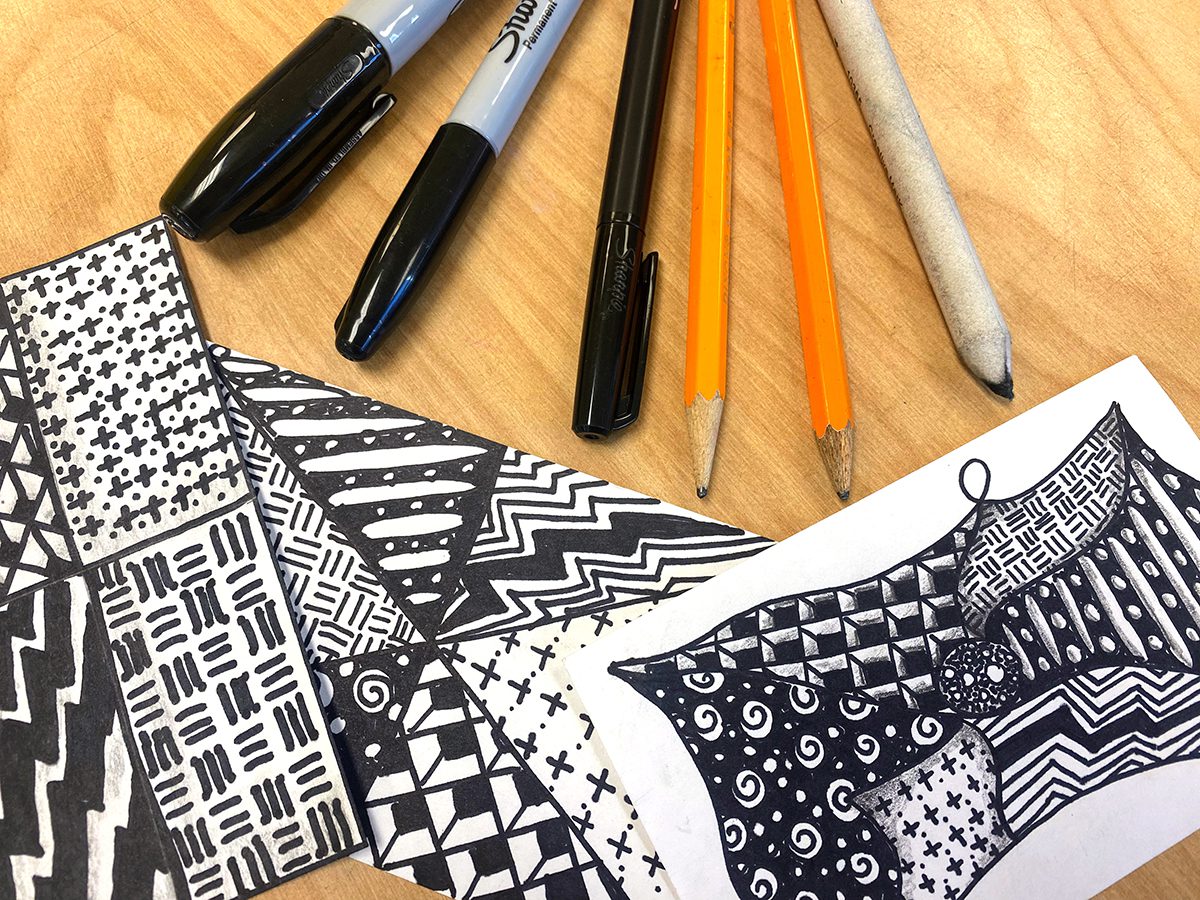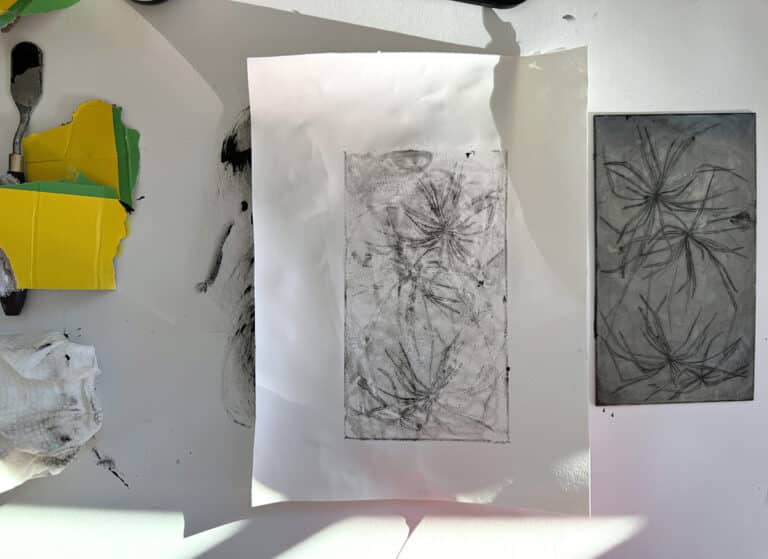We have all heard of Zentangle®, doodles, and tangles and have probably used them in our classroom. Doodling can be so much more than filling the paper with shapes and patterns. So, let’s talk about how they are the perfect subject or technique for almost any lesson, focus, or study in art class. It’s not too good to be true! Doodling can cover any element of art, subject matter, age group, or standard of study.
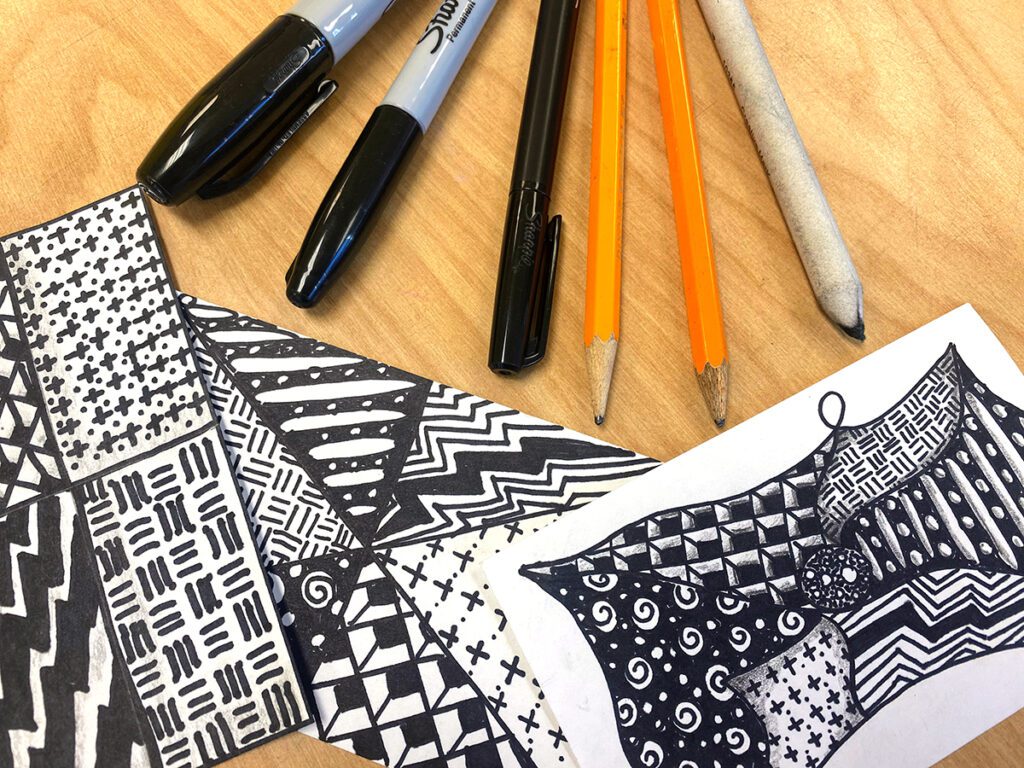
What is Zentangle®?
This technique started in the early 2000s in Massachusetts. The founders are Rick Roberts, who had a long background in meditation, and Maria Thomas, a calligrapher and artist. Together they created a non-representational art form focused on easy, repetitive shapes, lines, and patterns that fill specified areas on square paper. This art form assists with calming the mind and surrounding environment and is a popular way to doodle.
What does doodling teach?
There is more to doodling than meets the eye! Doodling has many benefits; it can teach students many skills and reinforce concepts. Here are a few things doodling can bring to your curriculum and classroom:
- Elements and Principles
Pick any element or principle of art and demonstrate it with a doodle! For example, students can practice doodle designs that exemplify line by varying line width, length, and direction. They can play with repetition to create rhythm or texture.
- Craftsmanship
Working with permanent markers or ink pens encourages students to be careful and thoughtful with their work. - Focus
The “Zen” in Zentangle® is exactly right! When students try out these techniques, they are better able to focus on their work. - Mental Health Awareness
Art therapy utilizes this art form primarily to reduce stress and anxiety. The main purpose is to make simple patterns. When it becomes repetitive, the mind can slow down and get a break.
Keep reading to find out six ways tangles are perfect for any subject you want to cover in your classroom.
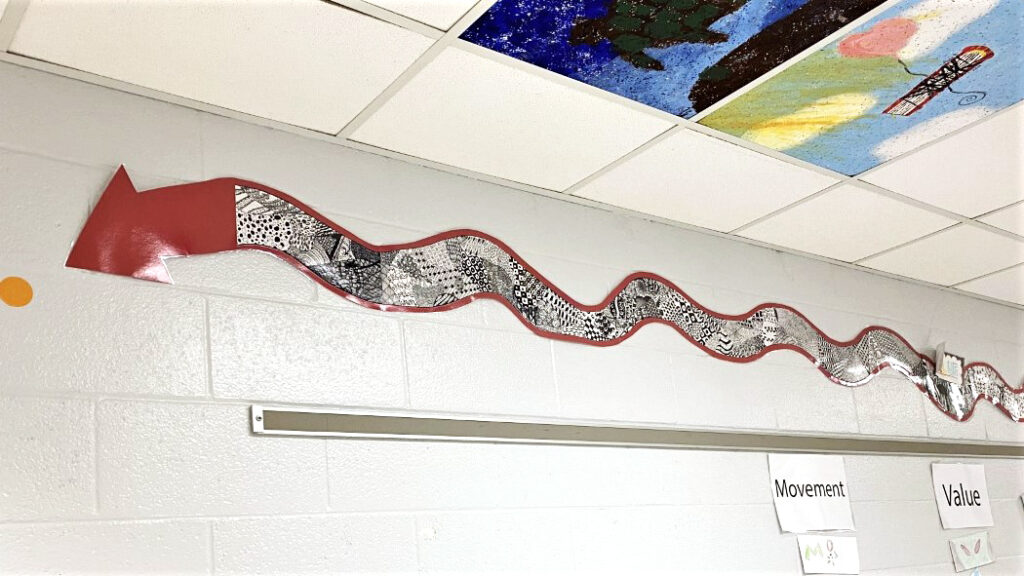
1. It’s inexpensive.
Doodling only needs a couple of materials for our students to be successful. And even better, those materials are inexpensive, and you probably already have them!
Here are some key supplies:
- Paper: Any drawing paper will work.
- Pencils: Unlike other drawing techniques, students can use any drawing pencil, mechanical pencil, or good old yellow #2 to create their patterns.
- Blending Tool: If you don’t have blending stumps or tortillons, you can even use cotton swabs, tissues, or paper towels.
- Permanent Markers: Any permanent marker will work for these techniques. It’s a good idea to have ultra or extra-fine points as well as fine points on hand.
- Optional: Colored permanent markers, micron pens, ballpoint or ink pens, and watercolor (for adding on top of the patterns) are all fun options to switch things up.
2. It’s adaptable.
Almost any age group can use these patterns and techniques, from kindergarten all the way up to adults! The fundamentals they teach are adaptable to each level. Patterns range from simple to intricate and can gently challenge any artist.
Here are four ways to adapt doodles for younger age groups:
- Use simple patterns.
- Limit patterns and medium choices.
- Start with only geometric shapes.
- Fill in simple outlines to start.
Here are four ways to adapt doodles for older age groups:
- Exemplify specific elements of art to make the patterns more complex.
- Draw larger patterns.
- Allow students to create their own doodle patterns.
- Use in larger compositions of animals, objects, or logos.
3. It’s customizable.
There is an infinite amount of patterns to choose from when using doodling methods. If students feel boxed in by using just geometric patterns, they can look up more organic doodles. If students want to create their own patterns or combine two doodles, they have the freedom to do so.
4. There is a high rate of success.
Students are able to achieve great results without having to spend weeks of practice on a specific skill or technique. Self-criticism, fear of failure, and creative blocks are easy to combat with this method of drawing. Often students who feel they are not good at drawing find these doodles can create artwork worth being proud of. If you need a project that will boost student morale, doodles may be the thing to incorporate next!
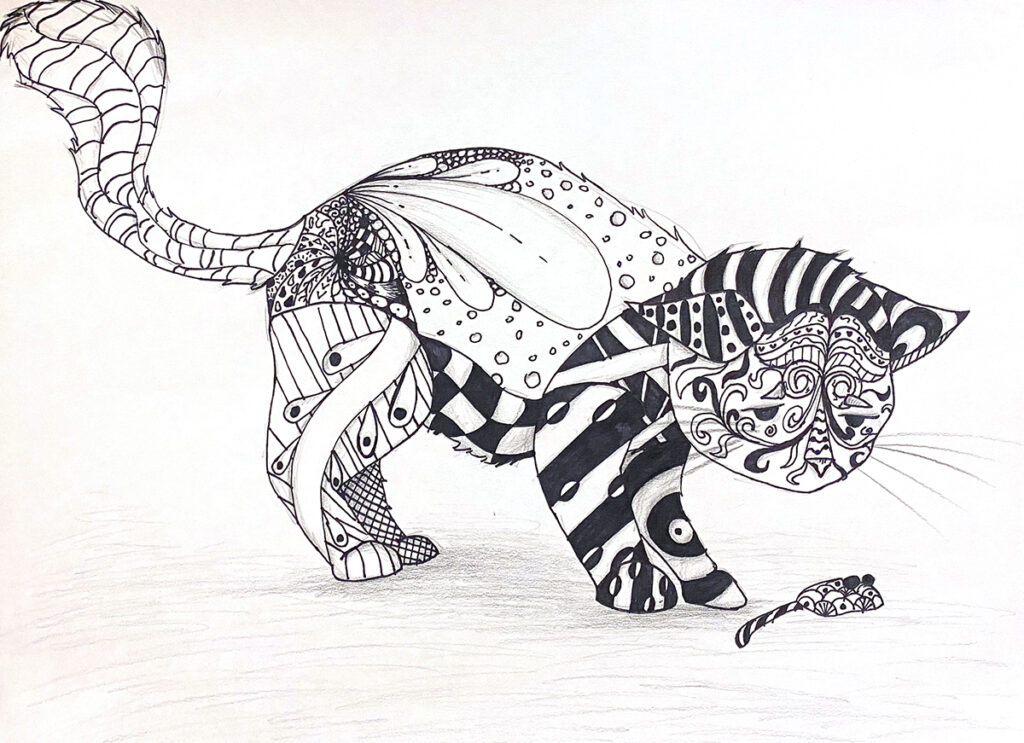
5. There are endless lesson connections.
No matter what connection you want to create with your lesson, doodling can be the stepping stone to reaching it. Doodles and tangles can connect to any element and principle of art.
Below are some examples of how to connect doodling with other topics of study:
- Landscapes or Cityscapes: Use doodles to convey depth and space by varying the value through line placement.
- Animals: Use doodles to show texture and form.
- Quilling or Paper Weaving: Cut doodles into strips and curl, fold, and glue or weave.
- Sculpture: Cut up doodles and transform them into paper sculptures.
- Illustrated Letters and Names: Use doodles to fill in fun fonts while learning about Medieval art and typography.
- Watercolor Techniques: Draw on top of watercolors to dive into mixed media and layering.
- Silhouettes: Fill the negative or positive space with doodles and explore Victorian silhouettes.
- Batik: Doodle with glue or wax and cover with watercolor or dye to demonstrate basic fiber art and surface design techniques.
6. It prioritizes mental health and can calm a classroom.
The mental health and wellness of teachers and our students are very important. Fortunately, doodling has the great benefit of creating a mindful classroom environment. Students can focus on the process of making patterns and lines instead of struggling with the frustration, self-doubt, or fear of failure that other art styles and techniques can cause. The high rate of success, coupled with the ease of creation, can boost our students’ moods and minds.
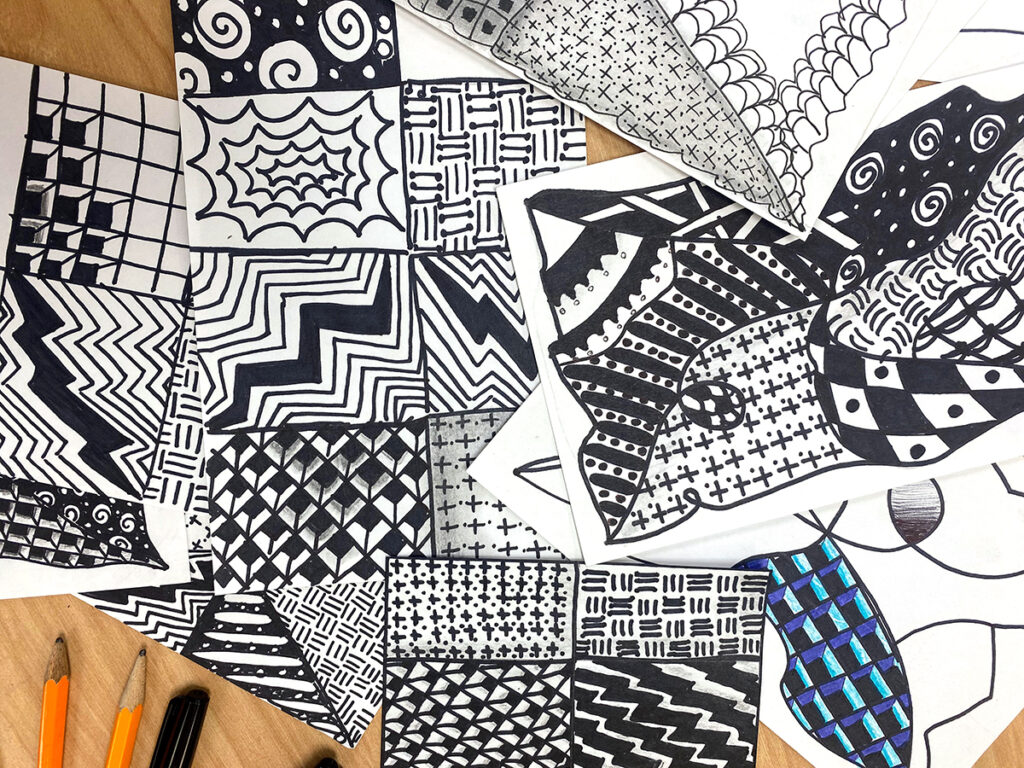
We all need a unit of study in our classes that allows space for high rates of student success and fosters a calm environment. Doodles and tangles can be an easy and quick way to incorporate both of these into your school year. Start small with a pencil and paper and basic patterns. As your students become more comfortable and enjoy the process, add more complex patterns, other media, and specific subject matter. Before you know it, students will be begging for doodles to have a permanent spot in your curriculum!
If you are looking for ways to take your doodles to the next level, check out the following resources:
- Implementing Sketchnotes Pack in PRO Learning
- The Building Blocks of Drawing Pack in PRO Learning
- “Doodle Portrait Collages” Lesson in FLEX Curriculum
- “Sea Life Doodles” Lesson in FLEX Curriculum
- Doodle Tac-Toe: An Artsy Twist to a Classic Game
What benefits has doodling added to your curriculum?
How can tangles create confidence in your students?
What is your favorite lesson that incorporates doodles?
Magazine articles and podcasts are opinions of professional education contributors and do not necessarily represent the position of the Art of Education University (AOEU) or its academic offerings. Contributors use terms in the way they are most often talked about in the scope of their educational experiences.
